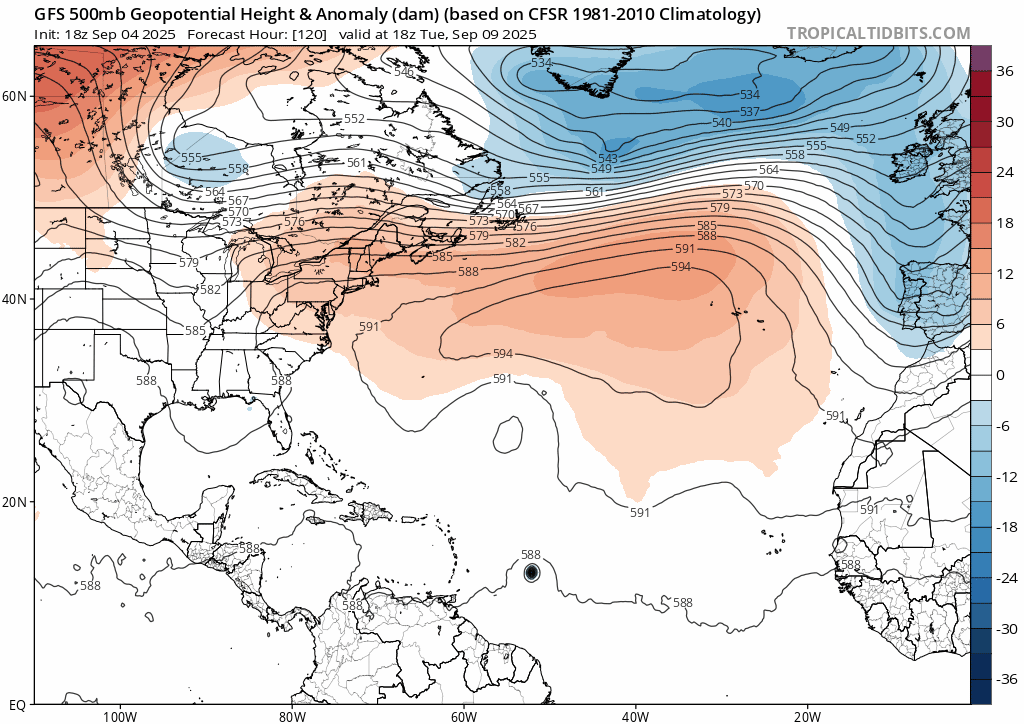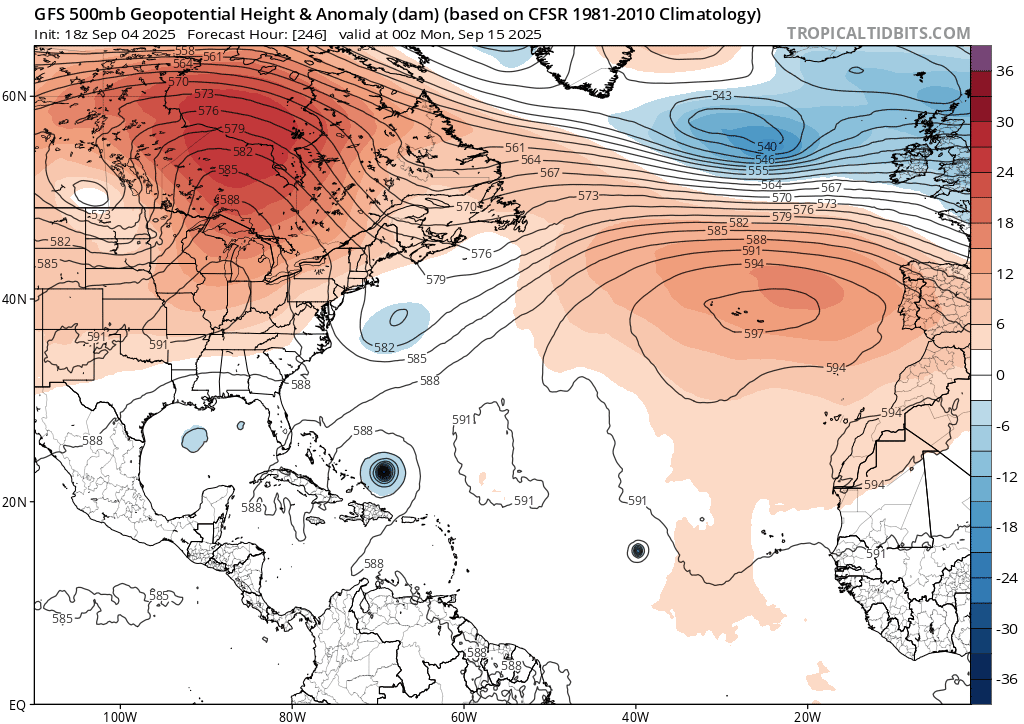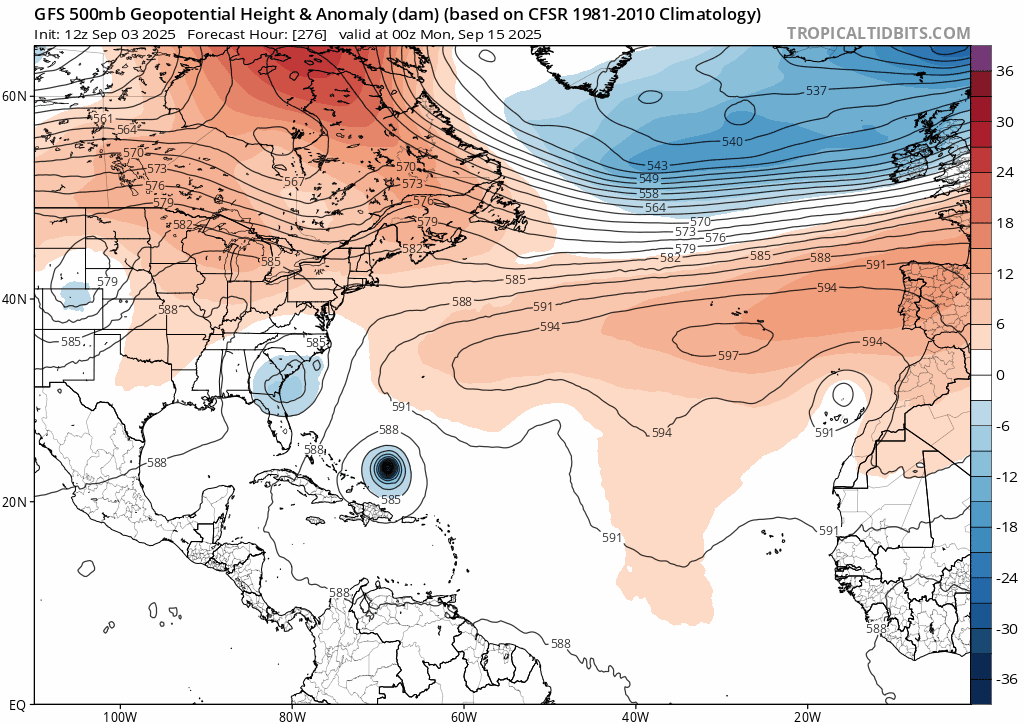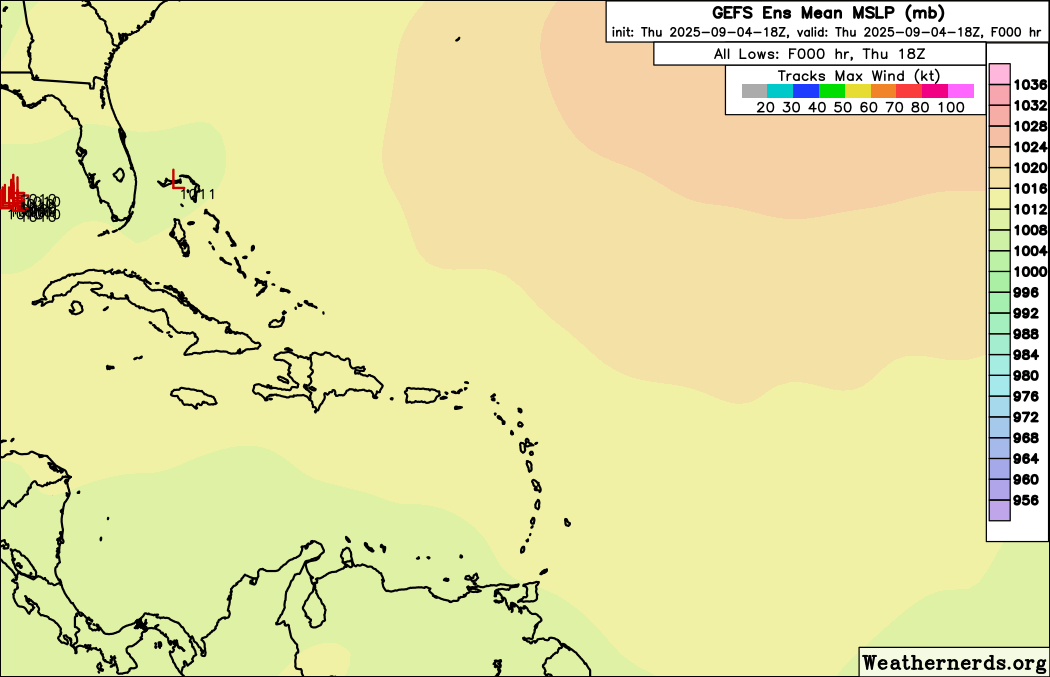Let me try to analyze why GFS did a complete 180, from a FL landfall at 12z to a recurve and Bermuda hit at 18z.
What happened on today's 18z run?First, the run shows a
trough coming down next week, making its closest approach to New England and Atlantic Canada on Friday 9/12. At this time, 91L is crossing into the Eastern Caribbean (landfall in Martinique) as a significant hurricane.
Even though the trough is too far north to pick up 91L, it leaves behind a
cutoff low. In the last frame of the following loop, at
0z 9/15, the cutoff low is just east of Virginia. It has been around and eroded the ridge for long enough that 91L has made a very notable turn NW once past Lesser Antilles, and has now lifted to east of Bahamas.

What happens afterwards is the interesting part. The cutoff low meanders along 40N and gradually moves east for 3-4 days, pulling 91L towards it ("recurving") very slowly. On 9/18, the cutoff low is still NE of 91L while a
second trough is now to its NW. The complex upper-level pattern makes 91L move almost due north for a day while approaching Bermuda, before resuming a more conventional recurve pattern the next day (in tandem with the second trough).

So three features played important roles in the evolution: The first trough (9/12), the cutoff low in the open Atlantic, and the second trough (9/18).
How confident are we with these features?First trough: GFS has insisted on the 9/12 trough for the past 5-6 runs. ECMWF, on the other hand, only shows agreement in today's 12z run, but not the previous runs. CMC is inbetween. Regardless, the first trough itself isn't important (as it's too far north).
Atlantic cutoff low: It's the most crucial feature among the three -- but unfortunately, it's far from certain and very random.
Remember the 0z 9/15 time stamp (246 hours out on the 18z)? Here's the trend for the past 6 runs:

The GFS has remarkable consistency with 91L's location: east of the Bahamas. But the Atlantic low is everywhere. Sometimes it's non-existent, sometimes it's much further east at 50W, and sometimes there's even a second low in the Gulf!
- 18z 9/4 (most recent)
- 0z 9/15: Atlantic low east of VA; Gulf low very weak
- Afterwards: Atlantic low slowly pulls 91L north, until the 9/18 trough tries to turn it but ultimately sends it OTS (past Bermuda)
- 12z 9/4
- 0z 9/15: Atlantic low south of Newfoundland; Gulf low moderately strong near AL
- Afterwards: Ridge builds back, 91L moves WNW to FL, then pulled north by the Gulf low and brushes the East Coast
- 6z 9/4
- 0z 9/15: No Atlantic low; Gulf low weak and offshore FL Panhandle
- Afterwards: 91L crosses through the Bahamas, interacts with Gulf low offshore FL, moves north and landfalls in SC
- 0z 9/4
- 0z 9/15: Atlantic low at New England-Nova Scotia and decaying; Gulf low in Mexico
- Afterwards: Atlantic low is gone, but leaves a weakness long enough that 91L is still pulled north by it, and then OTS by the second trough
- 18z 9/3
- 0z 9/15: Atlantic low is quickly decaying, with some remnants near Bermuda and just north of 91L; no Gulf low
- Afterwards: Ridge builds back quickly, 91L moves NW and brushes NC - New England
Not only are the strength, location and evolution of the Atlantic low very uncertain, but the possibility of a second Gulf low complicates things even further! For many East Coast states from FL to RI/MA, landfalls can occur in multiple scenarios depending on both lows (and a possible second trough).
Cross-checking with other models, 12z ECMWF has the cutoff low further east near Newfoundland, just like 12z GFS. Meanwhile, 12z CMC has the (very weak) Atlantic low all the way down to Florida, and 91L is already starting a turn NW (if not W) towards it at the end of the run.
IMO, this is nowhere close to "your typical mid-September with troughs everywhere". Betting on the Atlantic low lingering around for 3 days to save the day isn't very realistic.















